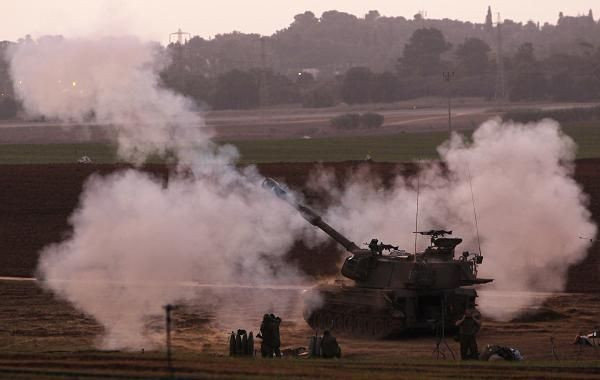Palestinian Death Toll Hits 100, Iron Dome Intercepts 300 Missiles From Gaza

As the hostilities between Israel and Hamas rage into week two, the Palestinian death toll has reached 100, including 24 children and 10 women, a spokesman for the Health Ministry in Gaza said Monday, according to Reuters. The Israeli death toll remains at three.
A small number of wounded Palestinians are being treated in Israeli hospitals, Jerusalem Post said, as hospitals in Gaza run short of supplies and wounded people keep pouring in. The director general of the Al-Shifa Hospital in Gaza City told Al-Jazeera around 400 victims came in in the first four days of the airstrikes. "What would have been enough for one week will be consumed in a few hours," he said.
Despite the high Palestinian death toll, the Israel Defense Force released videos it said showed the air force aborting missions because civilians were in the way. In the days since the assassination of the head of Hamas's military wing, Ahmed Jabari, Israel has struck 800 targets in Gaza and Hamas and other Palestinian factions has fired 500 rockets back, Al-Jazeera said.
Israel's Iron Dome Defense system, first deployed in March 2011, has proved to be more effective than expected, having intercepted some 300 of the rockets fired at Israel, the New York Times reported. The individual Iron Dome units, called "batteries" and designed by the Israeli company Rafael Advanced Defense Systems, consist of a radar unit and 60 missiles that are able to track and intercept incoming short-range rockets and 155mm artillery shells. Each battery of the Iron Dome is able to defend 150 square kilometers (about 93 square miles), Jerusalem Post said. Each missile in the battery costs between $40,000 and $50,000, according to the Times, and are thus designed only to intercept missiles headed for populated areas. Over the past for years the United States has given Israel $274 million for more batteries, and has pledged $610 million more.
Most of Hamas's rockets, Iranian Fajr-5s, were destroyed early in an air strike, are now being shipped and smuggled into Gaza piecemeal from Iran, the Times reported. They have a range of 45 miles (72 kilometers). Hamas's rocket-launching sites are in the middle of population centers in Gaza City, the Algemeiner reported.
The IDF similarly accused Hamas of deliberately hiding behind its citizens and endangering them by firing from densely populated areas. They also said Hamas had fired more than 500 rockets into Israel, about 10 percent of which misfire and end up landing in Gaza, the Jerusalem Post reported.
On Sunday the Israeli Foreign Ministry reported the IDF had targeted two buildings in Gaza used to house foreign media. The ministry claimed the strike was "clean," and that the building was hiding four members of Islamic Jihad, the Jerusalem Post said. All four were killed.
Israel has also called up 75,000 IDF reservists in preparation for a possible ground invasion of Gaza. IDF spokeswoman Avital Leibovich told the U.K. Telegraph that "morale is high."
Cease-fire talks between the two sides have already deteriorated in Cairo, YNet News reported. Hamas's leader said at a news conference in Cairo that Israel "must end the war," Al-Arabiya reported.
© Copyright IBTimes 2024. All rights reserved.






















